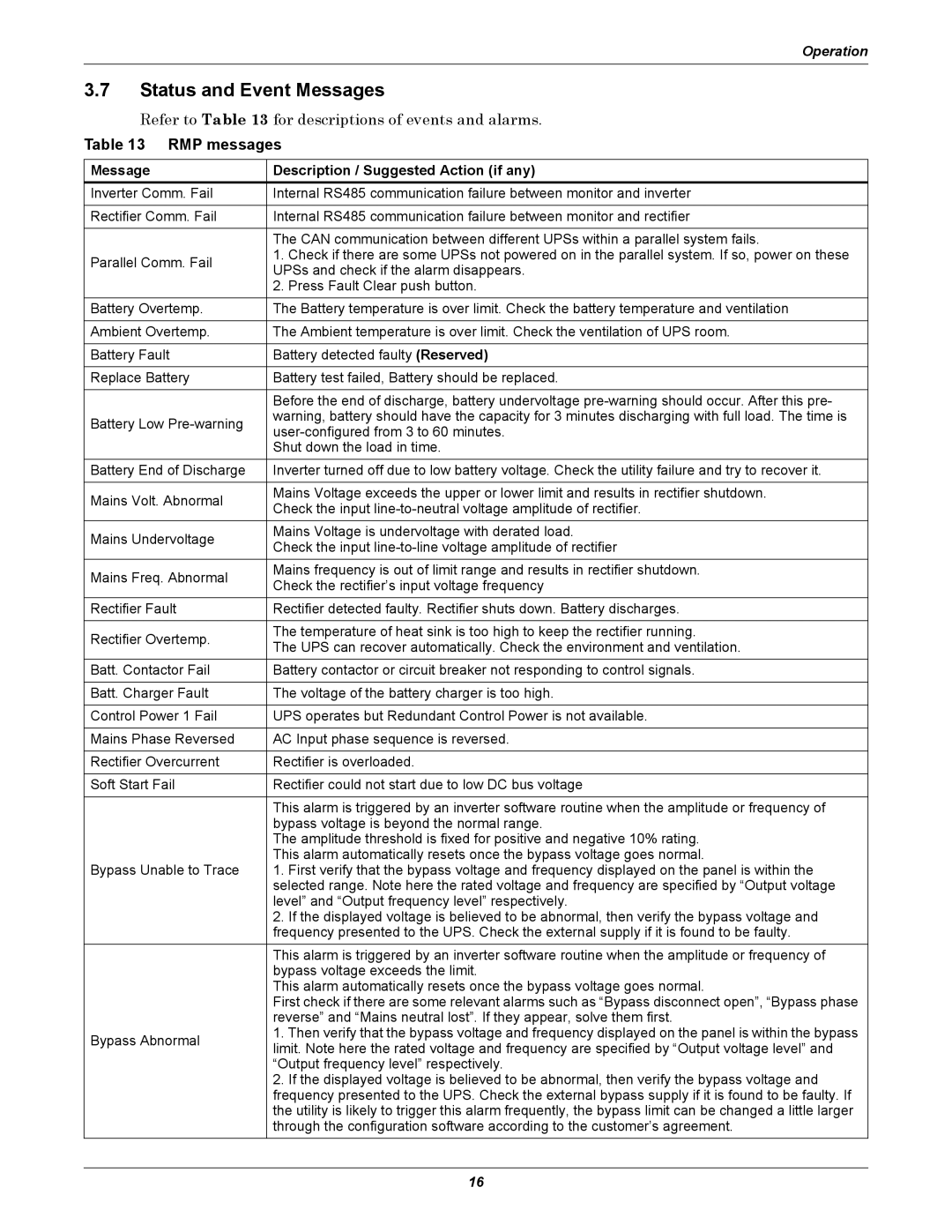Remote Monitoring Panel specifications
The Emerson Remote Monitoring Panel is a cutting-edge solution designed to enhance the efficiency and reliability of industrial operations. This advanced monitoring system allows users to oversee and manage crucial processes and equipment remotely, significantly reducing the need for onsite personnel while ensuring optimal performance and safety.One of the main features of the Emerson Remote Monitoring Panel is its real-time data collection capabilities. The system collects and analyzes performance metrics from various sensors and devices integrated within the operational environment. This data is visually represented on a user-friendly interface, allowing operators to monitor conditions, identify anomalies, and make informed decisions swiftly.
The remote access feature is another standout aspect of the Emerson Remote Monitoring Panel. Utilizing secure cloud technology, authorized personnel can access the system from anywhere, using a variety of devices, including smartphones, tablets, and computers. This flexibility enables teams to respond to alerts or issues instantly, no matter their location.
Incorporating state-of-the-art technologies, the panel employs advanced analytics and machine learning algorithms to predict potential failures or maintenance needs. By analyzing historical data and current operational parameters, the system can provide predictive insights that help organizations minimize downtime and reduce maintenance costs.
Moreover, the Emerson Remote Monitoring Panel is designed to integrate seamlessly with a variety of industrial equipment and existing systems. Its open architecture allows for easy connectivity with other monitoring solutions and enterprise resource planning software, ensuring a comprehensive view of operations across the board.
Safety and compliance are paramount, and the Emerson Remote Monitoring Panel includes robust security features to protect sensitive data. End-to-end encryption and multi-factor authentication ensure that only authorized users can access the system, safeguarding against potential breaches.
Additionally, the panel supports customizable alerts and notifications, enabling operators to set specific parameters for when an alert is triggered. This adaptability allows organizations to tailor the monitoring system to their unique operational needs and priorities.
In summary, the Emerson Remote Monitoring Panel is a powerful tool that transforms how industrial operations are monitored and managed. With its real-time data capabilities, remote access, advanced analytics, seamless integration, security features, and customizable alerts, it offers a comprehensive solution for optimizing performance, enhancing safety, and reducing operational costs. This innovation exemplifies the future of industrial monitoring, paving the way for smarter, more efficient operations.

